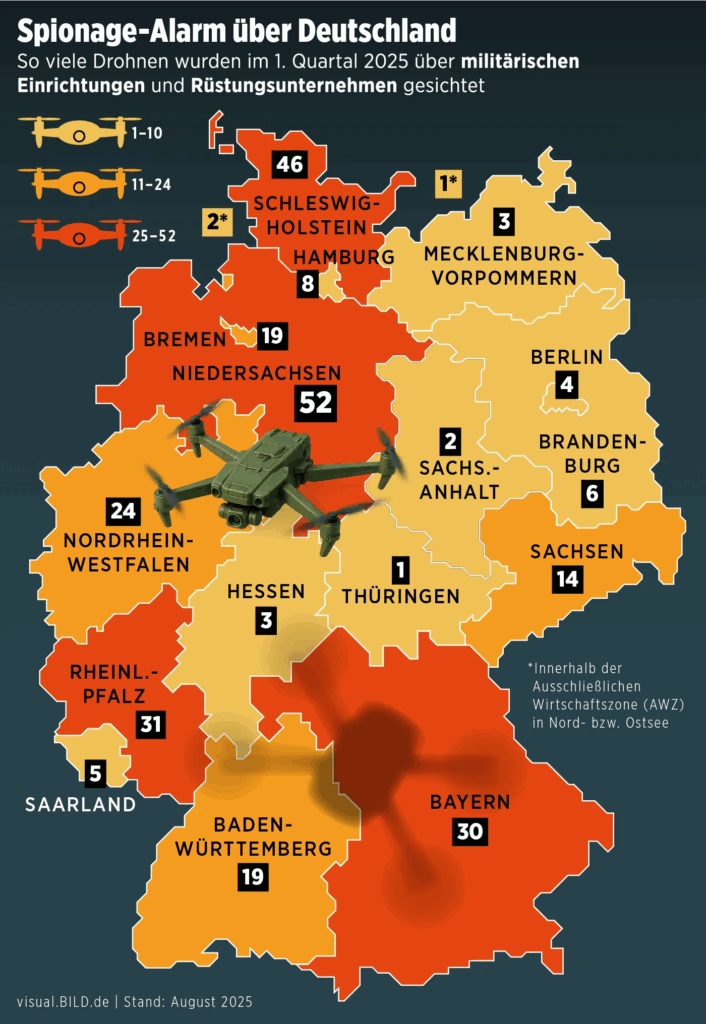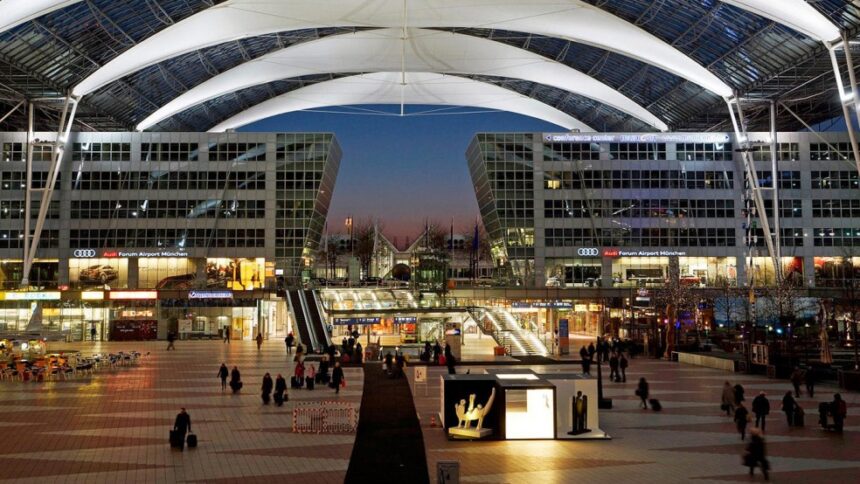Munich Airport introduced a new defense system that takes drone control to another level — literally. Following two days of chaos caused by unauthorized drone activity, German authorities have installed a laser-based detection system. The system is capable of tracking and intercepting rogue aerial devices before they enter restricted airspace. The deployment shows Germany’s attention on aerial threat mitigation. Drones are both a commercial tool and a security concern across Europe.
What’s Happening & Why This Matters
The recent drone disruptions near Munich grounded flights and stranded passengers, forcing emergency closures on two consecutive days. The impact rippled across European airspace. Flights were redirected to Stuttgart Airport, Vienna International Airport, Frankfurt Airport, and Nuremberg Airport. According to Bild, more than 170 flights were affected. Incidents left hundreds of passengers delayed or stranded overnight. Airport staff distributed beds, blankets, and refreshments, turning terminals into temporary shelters.
Germany’s Laser Response to Drone Chaos
The new laser-based system is a leap in anti-drone defense. Positioned strategically around the Munich airfield, the laser sensors can locate small, low-flying drones in real time. Unlike radar or visual detection tools, the system measures a drone’s exact distance, trajectory, and velocity with extraordinary accuracy. Once a potential threat is identified, Germany’s Federal Police can immediately initiate response protocols. These may include signal jamming, drone interception, or physical recovery of the device.

Officials told local media that the lasers are not designed to shoot drones down. Instead, they create an early warning perimeter capable of providing real-time situational awareness. The lasers’ tracking precision enables authorities to react before drones enter the restricted zones that surround critical flight paths and runways.
Security experts in Germany describe the setup as part of a multi-layered airspace protection network. It combines optical sensors, radar, and machine learning to distinguish between harmless and potentially hostile aerial devices. With incidents on the rise, this kind of hybrid system could become essential across Europe’s busiest hubs.
Drone Disruptions: A Continental Problem
Munich’s drone incident is a trend across Europe. In recent months, airports across eleven countries, including Denmark, Norway, France, Belgium, Poland, Lithuania, Romania, Estonia, and Latvia, have reported airspace disruptions linked to unauthorized drones. While some cases were attributed to hobbyists, others are believed to involve cross-border surveillance or coordinated sabotage operations.
The situation has prompted the European Union to fast-track a continental drone defense strategy, often referred to as the “drone wall.” The initiative proposes coordinated sensor systems and communication networks across EU borders. The aim is to monitor and intercept drone incursions. European leaders see the threat as both a national security and infrastructure concern. Airports, power grids, and data centers are potential targets for espionage or disruption.

German authorities were particularly anxious about the recent incidents in Munich due to the timing. The Munich Migration Meeting and Oktoberfest were taking place simultaneously, drawing large crowds and high-profile attendees. There was concern not only about operational disruption but also about the potential use of drones for surveillance. Malicious intent during public events was also a fear.
Precision Defense Meets Public Safety
The new system’s integration at Munich Airport signals how Germany is merging aviation management with defense-grade technology. The airport now operates under protocols similar to those of military airfields. Detection, identification, and neutralization occur within seconds. The combination of laser scanning, radar feedback, and live telemetry offers unprecedented coverage. The integrated prevention system enables real-time responses that minimize disruption while protecting passenger safety.
Authorities are framing the installation as a pilot project that could soon expand nationwide. The success of Munich’s system could shape drone management strategies in other cities like Frankfurt, Hamburg, and Berlin. These locations have passenger volume and air traffic density that make drone interference especially disruptive.
As more drones enter European skies — from recreational quadcopters to autonomous delivery aircraft — security officials face growing challenges. They must distinguish legitimate flights from dangerous incursions. Lasers may not eliminate the problem, but they add a powerful new layer of defense. The goal is to prevent large-scale flight cancellations and safety scares.
Global Implications and the Future of Airspace Control
The installation of lasers at Munich represents a pivotal step for the aviation industry. As airports worldwide invest in anti-drone measures, Germany’s response could influence how regulators and engineers address similar threats elsewhere. Heathrow Airport, Charles de Gaulle, and Amsterdam Schiphol have already begun evaluating similar systems. These integrate optics, radar, and AI to protect critical zones.
Drone interference isn’t just an inconvenience; it’s a direct threat to aviation safety. A small consumer drone colliding with an aircraft engine can cause extensive damage. It can delay takeoffs and trigger security lockdowns that cost millions. The European aviation community views Munich’s decision as a strong signal. They believe technology, not just policy, must lead the charge against drone disruptions.
TF Summary: What’s Next
Munich’s laser detection system introduces a new chapter in aviation security and airspace management. As unauthorized drone activity continues to expand, expect similar technology deployments across Germany and neighboring EU states.
MY FORECAST: The integration of lasers into civilian infrastructure shows how defense-grade innovation can enhance public safety without stifling progress. Drone operators, regulators, and technology developers now share a common challenge: keeping the skies both open and secure.
— Text-to-Speech (TTS) provided by gspeech


